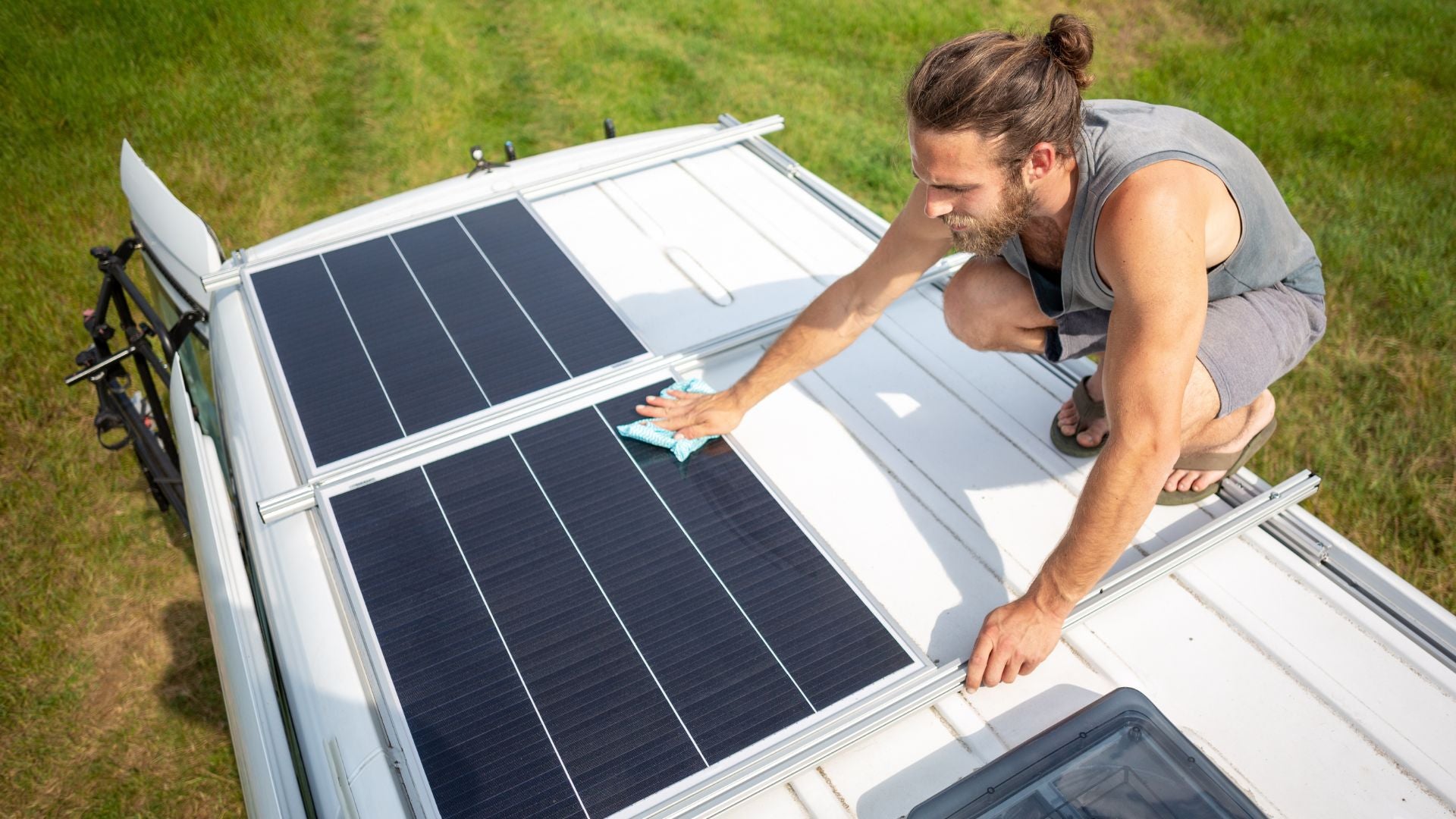You’ve decided you want to live the camper van lifestyle. Now, you might be thinking, how to best prepare for the adventures, new beginnings, and miles of road travel ahead of you? Naturally, in the age of electronics, you’ll want to bring devices, gadgets, and appliances to supe up your van for optimal living. Gas can get expensive and other energy sources may require specific, hard to install equipment. Therefore, consider solar panels. Solar energy is renewable, carbon-free, and easy to capture and convert into usable energy. Read this guide on how to install a solar panel onto your camper van to get started.
Pre-Installation Tips
Before you begin your installation project, it’s important to gather all necessary materials so you’ll have them on hand. With this solar panel installation guide, you’ll need your volt panels, roof rack, solar panels, mounting brackets, connector pairs, cables, batteries, and fuse holders. You may also need various tools, such as a drill, wire cutter, wire stripper, sealant applicator, screwdriver, multimeter, and MC4 connector tool. Depending on your level of experience, this project should take approximately one to three days—accounting for all prep time, active time, and time for additional repairs or readjustments.
Mounting Steps
Once you’ve obtained all your necessary tools and equipment, check to make sure your solar panels are not damaged or defective. Solar panels require certain brackets to attach to the van roof. These mounting brackets are referred to as Z-brackets. You should receive the Z-bracket, mounts, screws, and bolts in your bracket kit. You should also receive or purchase a bracket kit for each solar panel you plan to install. Now that you’re certain you have all you need and nothing is damaged or defective, it’s time to start installing your solar panels.
First, secure the solar panels in place. Simply mounting the solar panels onto the van’s roof will not be enough. Instead, you increase the risk of your panels flying off at high speeds or leakage. Therefore, place VHB and butyl tape at the underside of the Z-bracket. The butyl tape acts as a waterproof sealant while the VHB tape adheres the solar panels to the roof.
After you finish taping the panels and Z-brackets, attach the solar panels to the roof rack. Place them in the exact spot you want them. Tread carefully as once you place them it will be difficult to readjust later on. Also, bring out any wires from underneath the panels. You don’t want to trap wires underneath the solar panels or have them catch in the VHB tape. As soon as you place the panels down, you’re ready to screw them in place.
As you start to screw the solar panels in place, don’t be surprised if the Butyl tape compresses and squeezes out the sides of the bracket. This indicates a waterproof sealant formed around the bracket’s base, so don’t worry. If you prefer, you may also apply a layer of caulk over the bracket feet for additional waterproof protection. Caulk any gaps or crevices you notice to ensure no leaks. Afterwards, let everything dry for about two days to ensure the VHB tape, Butyl tape, and lap sealant cure.
Wiring Steps
After everything is dry, you’re ready to wire your solar panel system. Be cautious on buying flexible solar panels as these can suffer from heat damage. Contrarily, rigid panels have more durability to withstand environmental damage and wind resistance. Either way, wiring takes a little more precaution to ensure the right connectivity throughout the camper van. Use the cable connectors to wire the panels. You will need to drill a ¾” hole in the side of the topper and run the cabling through. You may need to apply more VHB tape and another layer of caulk sealant. Trim the connector from the extension cables, then connect them to the solar panel charge controller. Remember, the MC4 connector remains outside the van, while the cable end without the connector remains inside the van.
Once you’ve connected everything and finished your installation, you’ll want to apply primer, paint, and clear coat to the underroof in the inside of the camper van. Try to match the same interior color as your van. You can find the paint code on the door frame. Otherwise, you’ll need to look up the make, model, and year of your van to find the appropriate color. Do not spray directly onto the surface unless you’re painting a large section of the van. Instead, pour a small amount of paint into a plastic storage container and use a bristle brush or sponge brush to apply thin coats. Remember to open a window or van door to allow for proper air ventilation so you don’t ingest any harmful fumes. After everything is done, carefully test the charge controller to see if active electricity comes from the panels.
Other Considerations
Finally, as part of this guide on how to install a solar panel onto your camper van, consider some implications. Solar panels are expensive, heavy pieces of equipment. Taking liberal steps in the installation process could risk injury to other motorists. Therefore, make sure to follow each step accordingly to ensure your panels are secure. Of course, you should also make sure all electrical currents flow with the appropriate voltage and current. Using incorrect connectors, transformers, or other electrical converters could cause improper power to your camper van, making electrical devices or appliances useless. It can also cause overheating and a potential electrical fire if you’re not careful, which can have devastating repercussions to yourself and personal belongings. Follow all steps in their proper procedure.
If you have any questions regarding your camper van solar panel installation and setup, please don’t hesitate to contact us. At Unaka Gear, we have van solar panels ready to go for your camper van. Browse our selection of various monocrystalline solar panels, cable seals, and mounting brackets. Our panels come ready with heavy-duty ionized frames, rugged designs, and durable back sheets for extra strength and durability. Contact us today to learn more.




Share:
A Brief Guide to Camper Van Electrical Systems
5 Things To Think About Before Starting Your Van Remodel